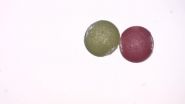(Press-News.org) DALLAS – June 26, 2014 – A drug that blocks the action of the enzyme Cdk5 could substantially reduce brain damage if administered shortly after a stroke, UT Southwestern Medical Center research suggests.
The findings, reported in the June 11 issue of the Journal of Neuroscience, determined in rodent models that aberrant Cdk5 activity causes nerve cell death during stroke.
"If you inhibit Cdk5, then the vast majority of brain tissue stays alive without oxygen for up to one hour," said Dr. James Bibb, Associate Professor of Neurology and Neurotherapeutics at UT Southwestern and senior author of the study. "This result tells us that Cdk5 is a central player in nerve cell death."
More importantly, development of a Cdk5 inhibitor as an acute neuroprotective therapy has the potential to reduce stroke injury.
"If we could block Cdk5 in patients who have just suffered a stroke, we may be able to reduce the number of patients in our hospitals who become disabled or die from stroke. Doing so would have a major impact on health care," Dr. Bibb said.
While several pharmaceutical companies worked to develop Cdk5 inhibitors years ago, these efforts were largely abandoned since research indicated blocking Cdk5 long-term could have detrimental effects. At the time, many scientists thought aberrant Cdk5 activity played a major role in the development of Alzheimer's disease and that Cdk5 inhibition might be beneficial as a treatment.
Based on Dr. Bibb's research and that of others, Cdk5 has both good and bad effects. When working normally, Cdk5 adds phosphates to other proteins that are important to healthy brain function. On the flip side, researchers have found that aberrant Cdk5 activity contributes to nerve cell death following brain injury and can lead to cancer.
"Cdk5 regulates communication between nerve cells and is essential for proper brain function. Therefore, blocking Cdk5 long-term may not be beneficial," Dr. Bibb said. "Until now, the connection between Cdk5 and stroke injury was unknown, as was the potential benefit of acute Cdk5 inhibition as a therapy."
In this study, researchers administered a Cdk5 inhibitor directly into dissected brain slices after adult rodents suffered a stroke, in addition to measuring the post-stroke effects in Cdk5 knockout mice.
"We are not yet at a point where this new treatment can be given for stroke. Nevertheless, this research brings us a step closer to developing the right kinds of drugs," Dr. Bibb said. "We first need to know what mechanisms underlie the disease before targeted treatments can be developed that will be effective. As no Cdk5 blocker exists that works in a pill form, the next step will be to develop a systemic drug that could be used to confirm the study's results and lead to a clinical trial at later stages."
Currently, there is only one FDA-approved drug for acute treatment of stroke, the clot-busting drug tPA. Other treatment options include neurosurgical procedures to help minimize brain damage.
INFORMATION:
Additional UT Southwestern scientists from the Department of Psychiatry who contributed to this study were lead author and former postdoctoral researcher Dr. Douglas Meyer; postdoctoral researcher Dr. Melissa Torres-Altoro; Instructor Dr. Florian Plattner; and former postdoctoral researcher Dr. Janice Kansy.
The work was supported by grants from the National Institutes of Health. Pharmaceutical company Boehringer Ingelheim provided the Cdk5-inhibiting compound indolinone used in the study.
This work is just one of numerous cutting-edge stroke research studies taking place at UT Southwestern, where patients have access to the newest treatments and clinical trials due in part to the stroke center's recent Advanced Comprehensive Stroke Center certification. This designation is the highest level of certification for stroke care by The Joint Commission. UT Southwestern's Robert D. Rogers Advanced Comprehensive Stroke Center offers the most advanced treatment available from a multidisciplinary team of vascular neurologists, endovascular specialists, vascular surgeons, neuro-radiologists and neuro-intensivists who are on call 24 hours a day to treat stroke patients.
For information on UT Southwestern's certification as an Advanced Comprehensive Stroke Center and our stroke patient outcomes, visit UTSW Medicine.
About UT Southwestern Medical Center
UT Southwestern, one of the premier academic medical centers in the nation, integrates pioneering biomedical research with exceptional clinical care and education. The institution's faculty includes many distinguished members, including six who have been awarded Nobel Prizes since 1985. Numbering more than 2,700, the faculty is responsible for groundbreaking medical advances and is committed to translating science-driven research quickly to new clinical treatments. UT Southwestern physicians provide medical care in 40 specialties to nearly 91,000 hospitalized patients and oversee more than 2 million outpatient visits a year.
This news release is available on our home page at
http://www.utsouthwestern.edu/home/news/index.html
Blocking key enzyme minimizes stroke injury, UT Southwestern research finds
2014-06-26
ELSE PRESS RELEASES FROM THIS DATE:
Study: Foreign-trained physicians frustrated at lack of residency positions
2014-06-26
TORONTO, June 26, 2014—Foreign-trained physicians feel there are not enough residency positions for them in countries such as Canada and the United States and this information was not communicated to them before they emigrated, a new study has found.
Researchers at St. Michael's Hospital surveyed international medical graduates to better understand the concepts of "brain drain," the migration of health care workers from low- and middle-income countries to higher-income countries, and "brain waste," where their skills are under-utilized or not utilized in their new country. ...
Lab monitoring tests not always ordered per recommendations
2014-06-26
Why does one physician in a walk-in practice order laboratory monitoring tests for patients more often than a colleague working down the hallway? Which factors influence the use of these important tests that can help doctors ensure that high-risk drugs are prescribed safely? Clues to these questions lie in the age and general health of the patient, and whether the doctor is a specialist or not, says Shira Fischer of the Beth Israel Deaconess Medical Center in Boston. She is the lead author of a study¹ which appears in the Journal of General Internal Medicine², published ...
First-grade teachers using ineffective instruction for math-challenged students
2014-06-26
WASHINGTON, D.C., June 26, 2014 - First-grade teachers in the United States may need to change their instructional practices if they are to raise the mathematics achievement of students with mathematics difficulties (MD), according to new research published online today in Educational Evaluation and Policy Analysis, a peer-reviewed journal of the American Educational Research Association.
VIDEO: Co-author Paul L. Morgan discusses key findings https://www.youtube.com/watch?v=xCAzLGSZ6aM&feature=youtu.be
"Which Instructional Practices Most Help First-Grade Students with ...
Decoding characteristic food odors
2014-06-26
Complementing the five basic tastes of sweet, bitter, salty, sour and umami, a large variety of odors also contribute to the overall sensory impression of a foodstuff. In recent decades, approximately 10,000 volatile food compounds have been identified. Scientists from Technische Universität München (TUM) and the German Research Center for Food Chemistry (DFA) have carried out a meta-analysis on the odorant patterns of 227 food samples.
How cognac gets its complex notes
They were surprised to find that the almost unlimited variety of food smells is based on 230 key ...
Treating gum disease improves vascular health in Indigenous Australians: Study
2014-06-26
A simple non-surgical gum disease treatment markedly reduces the thickness of the wall of the arteries, a risk factor for heart disease, according to a first of its kind study among Aboriginal Australians.
The study findings may be of particular importance to Aboriginal Australians, who in general have poorer oral health and higher rates of cardiovascular disease.
Published in the latest issue of Hypertension, the study reports a significant decline in thickening of the wall of the carotid artery a year after a single session of gum treatment.
"The study shows that ...
Increased nearsightedness linked to higher education levels and more years spent in school
2014-06-26
German researchers have found strong evidence that attaining a higher level of education and spending more years in school are two factors associated with a greater prevalence and severity of nearsightedness, or myopia. Published online this month in Ophthalmology, the journal of the American Academy of Ophthalmology, the research is the first population-based study to demonstrate that environmental factors may outweigh genetics in the development of myopia.
While common, nearsightedness has become even more prevalent around the world in recent years and presents a growing ...
Victoria's volcano count rises
2014-06-26
Geologists have discovered three previously unrecorded volcanoes in volcanically active southeast Australia.
The new Monash University research, published in the Australian Journal of Earth Sciences, gives a detailed picture of an area of volcanic centres already known to geologists in the region.
Covering an area of 19,000 square kilometres in Victoria and South Australia, with over 400 volcanoes, the Newer Volcanics Province (NVP) features the youngest volcanoes in Australia including Mount Schank and Mount Gambier.
Focusing on the Hamilton region, lead researcher ...
Shaken, not stirred -- mythical god's capsules please!
2014-06-26
VIDEO:
Two oil drops, covered with particles of different properties, coalesce due to the action of an alternating electric field, forming a Janus capsule.
Click here for more information.
Everything depends on how you look at them. Looking from one side you will see one face; and when looking from the opposite side – you will see a different one. So appear Janus capsules, miniature, hollow structures, in different fragments composed of different micro- and nanoparticles. Theoreticians ...
A versatile joystick for animation artists
2014-06-26
Remember those molecule models made from sticks and balls you could assemble to study complex molecules back in school? Something similar has taken shape in the Interactive Geometry Lab at ETH Zurich. ETH-professor Olga Sorkine-Hornung and her team do not study molecules but ways to manipulate virtual shapes, like animated characters on a computer screen. Now they have developed an input device or "joystick" to move and pose virtual characters, made up – similar to the molecule models – of modular building blocks. An artist can assemble these blocks into an approximate ...
US rich get richer on stock market investments while modest investors are left behind
2014-06-26
In a new study, researchers from Imperial College Business School, Columbia University and the University of Maryland found that wealthy individuals in the US can get in relative terms up to 70 per cent times greater returns on their investments than those with modest wealth, when the yields on assets such as stocks and bonds are calculated. The team say that this further widens the income gap between rich and poor and potentially creates disparities in society.
Income inequality in the US has been steadily rising. According to a report by Oxfam International released ...




